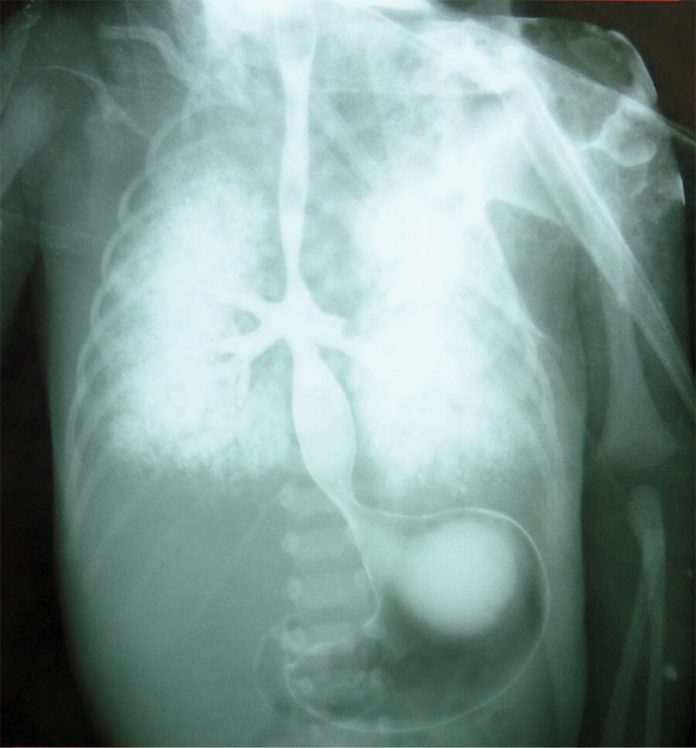A baby boy died due to respiratory failure within 4 hours of delivery. Postnatal karyotyping confirmed the diagnosis.
A mother delivered the baby at 32 weeks of gestation. The baby had cyanosis and respiratory distress. She had not received any prenatal care and did not have any antenatal ultrasounds. The doctors intubated the neonate. After failed attempts, they attempted tracheostomy. However, they remained unsuccessful. Additionally, bag-valve-mask ventilation was also performed, but unfortunately, the baby boy died due to respiratory failure within 4 hours of delivery.
Post-mortem barium esophagram identified tracheal agenesis and bronchoesophageal fistula. An autopsy confirmed the absence of the trachea. Moreover, it also confirmed the fusion of the main bronchi and bronchoesophageal fistula. All the findings were consistent with a diagnosis of type II tracheal agenesis (Floyd classification system). Moreover, the examination revealed dysmorphic facial features, an ostium secundum atrial septal defect, a double superior vena cava, and a horseshoe kidney.
Postnatal karyotyping confirmed trisomy 18.
Trisomy 18, also called Edward syndrome is a chromosomal disorder. Typically, each chromosome has 2 copies; in trisomy 18, chromosome number 18 has three copies, hence the name. The addition of extra chromosome results in life-limiting characteristics. It occurs in about 1 in 5,000 live births. Besides this number, it is more common during pregnancy, as many of the affected fetuses do not survive to term.
It is difficult to determine the life expectancy of babies with trisomy 18. However, around 50% of affected neonates survive past the first week of life, and 5-10% of affected infants live beyond the first year. With the advancement in the diagnostic techniques, prenatal diagnosis of the syndrome has become possible. If not diagnosed antenatally, the affected fetuses can be diagnosed soon after birth.
References
Sihem Darouich, M. a. (2021, March 04). Tracheal Agenesis with Bronchoesophageal Fistula. Retrieved from The New England Journal of Medicine: https://www.nejm.org/doi/full/10.1056/NEJMicm2027782




